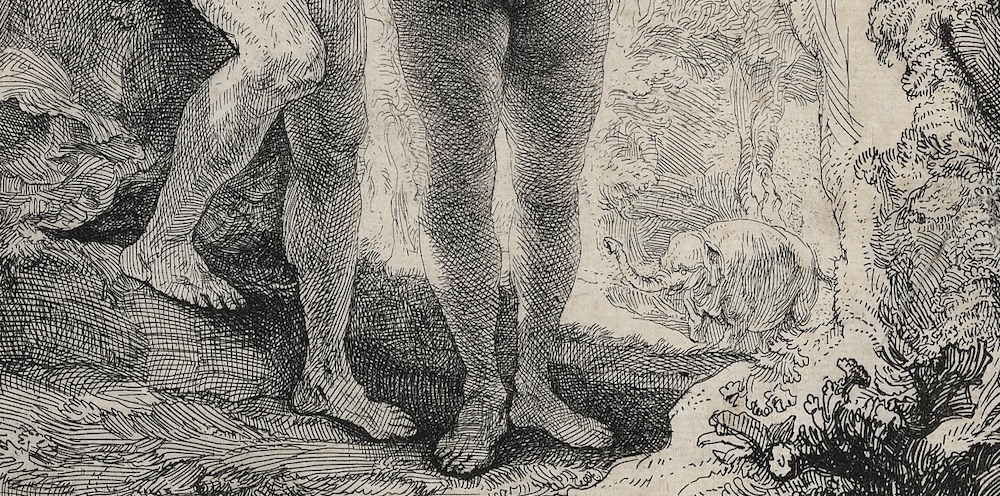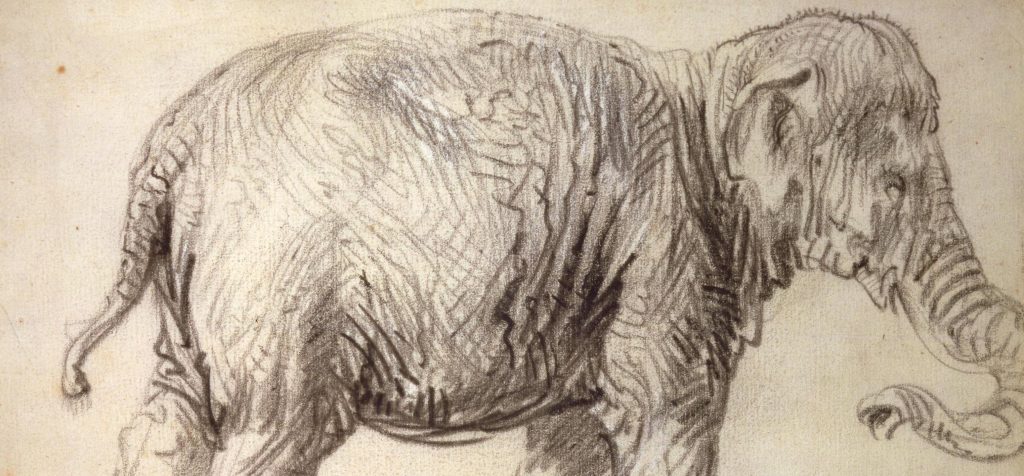THE REMBRANDT HOUSE MUSEUM
on view until 29 August 2021
She was famous across Europe: the Asian elephant Hansken. In the middle of the seventeenth century, she was the only living elephant on the continent and was toured to markets, fairs, and courts. When Hansken was in Amsterdam, Rembrandt drew her. Occasion for The Rembrandt House Museum to tell her life’s story in an exhibition for young and old. Hansken, Rembrandt’s Elephant presents works of art by Rembrandt and his contemporaries, historical documents, and a digital map on which you can follow Hansken’s trail through Europe. But also Hansken’s skull, which has been preserved and has been brought from Italy to The Rembrandt House Museum specially for this exhibition. The story of Hansken is astonishing, but also moving. She had to put up with a lot in her life; she was forced to go on long journeys and constantly had to make appearances. Besides the beautiful works of art made after her by Rembrandt and his contemporaries, this exhibition also sheds light on elephant welfare from today’s standpoint. Hansken, Rembrandt’s Elephant is on view until 29 August in The Rembrandt House Museum.
Rembrandt meets Hansken
In 1633 Hansken first appeared in Amsterdam. She could be seen that summer on the Kloveniersburgwal, just around the corner from Rembrandt. But the artist may have been in Friesland at the time. In the autumn of 1637 she was in Amsterdam once more and then Rembrandt seized his opportunity. He must have been filled with wonder, as he had never seen an elephant before in real life. The enormous, grey animal with her long trunk will have made a deep impression on him: he immortalized her on several occasions.
Leonore van Sloten, curator at The Rembrandt House Museum: ‘Rembrandt’s drawings of Hansken really show him observing closely and with great interest: he drew her “after life”, with attention to every detail including her short hairs, skin folds and the movement of her feet and trunk. These drawings hang next to Rembrandt’s etching of Adam and Eve in Paradise in the exhibition. There, you see Hansken in the background. Rembrandt incorporated a contemporary element in the Biblical scene, which made the print even more appealing to buyers.
 Rembrandt, Adam and Eve in Paradise, 1638. Etching. The Rembrandt House Museum, Amsterdam (detail).
Rembrandt, Adam and Eve in Paradise, 1638. Etching. The Rembrandt House Museum, Amsterdam (detail).
Hansken did not only leave traces behind in works of art. In 1647 she sank through a wooden bridge on the dyke beside the Amstel just outside the city, and ended up in the water – but remained unharmed. A short poem, The Elephant Bridge, by the seventeenth-century poet Jan Six van Chandelier, commemorates this event. The bridge was restored, but now made of stone and named The Elephant Bridge. In the same neighbourhood there was also an Elephant Path and a tavern called The Elephant.

